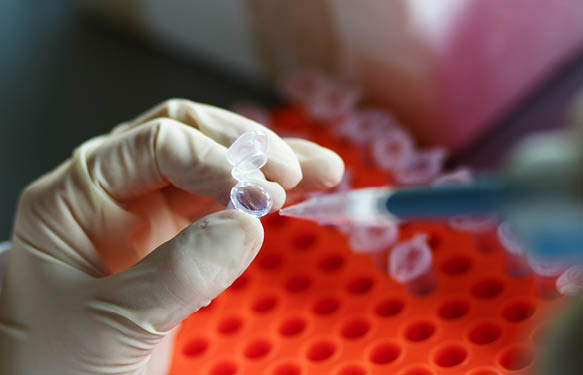Pharmaceutical, biotech and medical device industries apply restrictive quality systems in their bio-production processes. Among the numerous parameters controlled daily by scientists, I have selected a particular one for this post, i.e endotoxin detection.

Endotoxins (Lipoglycans or lipopolysaccharides), also called LPS, are found in the outer membrane of gram-negative bacteria. They induce strong immune responses in mammals. Their presence in biological samples might induce toxic and strong adverse reactions in animals or patients. It’s crucial to make sure that they are not contaminating your (endotoxin-free) samples all over the bio-production flow.
For this, endotoxins should be monitored for each and every component used, and at every step of the experimental procedure including protein and plasmid preps in early R&D stages.
Why use an endotoxin detection assay?
LPS are large molecules consisting of a lipid and a polysaccharide. This polysaccharide is composed of an O-specific polysaccharide chain, a glycolipid core including an outer and an inner core joined by a covalent bond and lipid A (phosphorylated glucosamine di-saccharide with multiple fatty acids). The toxicity of gram-negative bacteria is due to the lipid A domain. In fact, when the bacteria cells are lysed by the immune system, fragments of membrane with lipid A are released into the blood circulation. This induces inflammation causing fever, diarrhea and, and in some cases, fatal septic shock.

As various protocols are available, one might think that selecting the technology to be used to detect LPS levels would be easy. It’s not that simple. Between those claiming advanced sensitivity thresholds and others stating high specificity, reliable LPS-detection methods are indeed not so numerous. One way to select the most appropriate approach for you, is to follow the test recommended by the FDA, even for the validation of your proteins and plasmid preparations at the early stages of the R&D.
Endotoxin detection with FDA-licensed LAL quantification assays
LAL test is the golden method for assessing endotoxin levels in your samples. Extracted from Horseshoe crab’s blood cells (Limulus Amebocyte Lysate), LAL reacts with bacterial endotoxin.
The new generations of these LAL-based assays are semi-automated for faster and reproducible quantitative results. The new Endosafe®-PTS™ system (Charles River) acquired by tebu-bio is in line with the FDA’s initiative for Process Analytical Technology (PAT). Combined to their recombinant protein and plasmid preparation platforms, tebu-bio’s LAL tests contribute to fast and sensitive quality controls (0.05 EU/ml) without compromising your whole R&D or bio-production projects.

Outsouce your protein and plasmid productions to a C.R.O. which integrates FDA approved endotoxin testing service!
If you’d like to benefit from FDA licensed LAL assays for your plasmid or protein productions, tebu-bio’s laboratories will be of interest to you. To know more about their endotoxin-free platforms, leave a message below or contact me!




One Response
need to run a endotoxin screening test on a polymer excipient